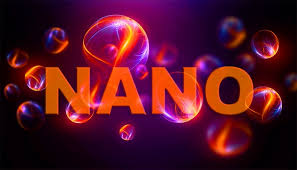Understanding the pattern of nano-telecommunication network and communication of nano-trackers (IoNT) based on PhD in nano-microelectronics
Researcher and author: Dr. ( Afshin Rashid)
Note: The nano-network has more communication and processing potentials that overcome the limitations of independent nano-devices through the cooperation of nano-devices. A nano-network can transfer data to an external device such as a smartphone or gateway, enabling nano-devices to communicate wirelessly with powerful external processing devices. This gateway can be connected to the Internet. When nano-networks connect to an Internet gateway, they activate a new network pattern called the Internet of Things (IoNT).
Nano Network Technology or Nano Network introduces a new set of tools to the engineering community to design nano machines. Nano-devices are basic nano-applications that are able to do very simple things. The nano-device is independent with limited energy, processing and communication. In addition, Nano-Network is a network of nano-devices, expanding the capabilities of a nano-device by providing a way to collaborate and share information. In general, nano-communication is the exchange of information at the nanoscale based on any wired or wireless connection of nano- devices in a nano-network.
In a molecular telecommunication system, the transmitter sends information by chemical molecules called information molecules and after propagation in the environment, it is received and decoded by the telecommunication receiver. Telecommunication theories play a special role in the modeling, analysis and design of molecular telecommunication systems. A nano-network is a nano- scale communication network between nano-devices. Nano-devices face certain challenges in performance due to limitations in power management processing capability . Therefore, these devices are expected to perform simple tasks that require different and new approaches. Molecular telecommunications is a new information and communication solution that operates on the basis of biological mechanisms and systems.Two nanoparticles can communicate with each other through chemical signaling. Nano-communications expand the capabilities of nano-devices to enhance their features and expand the range of their applications. One of the most promising techniques for data exchange between nano-devices is the electro-magnetic (EM) connection in the terahertz band , which uses the electromagnetic wave as a carrier and uses its properties such as amplitude, phase and delay to encrypt / decrypt information. Used.
Conclusion :
The nano-network has more communication and processing potentials that overcome the limitations of independent nano-devices through the cooperation of nano-devices. A nano-network can transfer data to an external device such as a smartphone or gateway, enabling nano-devices to communicate wirelessly with powerful external processing devices. This gateway can be connected to the Internet. When nano-networks connect to an Internet gateway, they activate a new network pattern called the Internet of Things (IoNT).
Author: Dr. ( Afshin Rashid)




